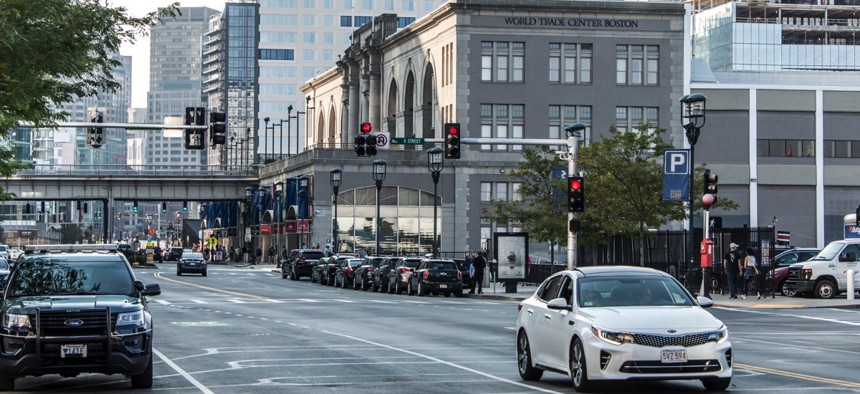A Blueprint For A Modern, Regional Transportation System


Connecting state and local government leaders
But a new report says there’s still a ways to go investing in the right technology, infrastructure and policies.
A clean, interconnected regional transportation system along the East Coast requires state and local government to invest in modern technology like electric vehicles and improve access to transit, a new report from the Natural Resources Defense Council suggests.
Failing transportation infrastructure cost the U.S. $147 billion in 2015, according to the American Society of Civil Engineers, and vehicle emissions are now the biggest contributor to the pollution that drives climate change.
The governors of Connecticut, Delaware, Maryland, Massachusetts, New York, Rhode Island, and Vermont, as well as the mayor of Washington, D.C., formed a coalition in 2017 to redevelop an interconnected transportation system spanning the Northeast and Mid-Atlantic. Along with Maine, New Hampshire, New Jersey, and Pennsylvania, they comprise the Transportation and Climate Initiative researching clean mobility.
If the combination of states sounds familiar, it’s because they also make up the Regional Greenhouse Gas Initiative that has halved regional power plant emissions in the last decade. In its report, the NRDC aims to provide guidance to policy makers about how to move forward.
Drivers in these East Coast states spent $50 billion on gas in 2016, but electric vehicles, or EVs, could change that—keeping those dollars within local economies. The report suggests governments encourage people to switch to EVs by expanding charging infrastructure and offering incentives lowering the cost of purchase.
“Electric vehicles have a lower cost-per-mile than their gasoline-powered counterparts, potentially saving owners hundreds of dollars per year. They also require less maintenance, which equals even more savings,” reads the report. “Though their upfront cost is currently higher, EV prices continue to fall.”

Rural communities’ primary transportation focus must be on accessibility, according to the report. Households spend 7 percent more of their budgets on transportation in rural America despite a 34 percent lower median income as of 2015, in part, because they must travel further and lack options like bus rapid transit.
Seniors also live in rural areas in greater numbers and are less likely to drive, which can make it hard for them to access health care if no bus, rail or paratransit services are readily available.
Suburban communities, by contrast, must do a better job siting affordable housing along transit corridors to counteract rising rents that push low-income families further away from job and educational opportunities, according to the report. Linking bike paths up to such corridors is recommended, as is increasing the frequency of commuter rail to reduce reliance on cars—thereby curbing emissions.
The Northeast and Mid-Atlantic regions are home to three of the 10 most traffic congested cities in the U.S.: Boston, New York City and Washington, D.C. Boston and D.C. drivers averaged more than 60 hours sitting in traffic in 2017, while New Yorkers spent 91 hours, according to the report.

As a result, urban neighborhoods need to become more walkable and bikeable and feature more public transit near affordable housing.
Cities should outfit their bus and employee fleets with clean, electric vehicles—cutting down on carbon dioxide and noise pollution, according to the report. Ports, airports and truck depots are the biggest polluters, and electrifying their heavy trucks and equipment is healthier for the low-income communities often next door.

“The Northeast and Mid-Atlantic region needs a 21st century transportation system, which if done right, can make the region a beacon to the rest of the country and the world,” reads the report. “But this will require strong commitments from regional, state, and local leaders.”
Dave Nyczepir is a News Editor at Government Executive’s Route Fifty and is based in Washington, D.C.

NEXT STORY: Misconfigured cloud leaves voter data exposed





